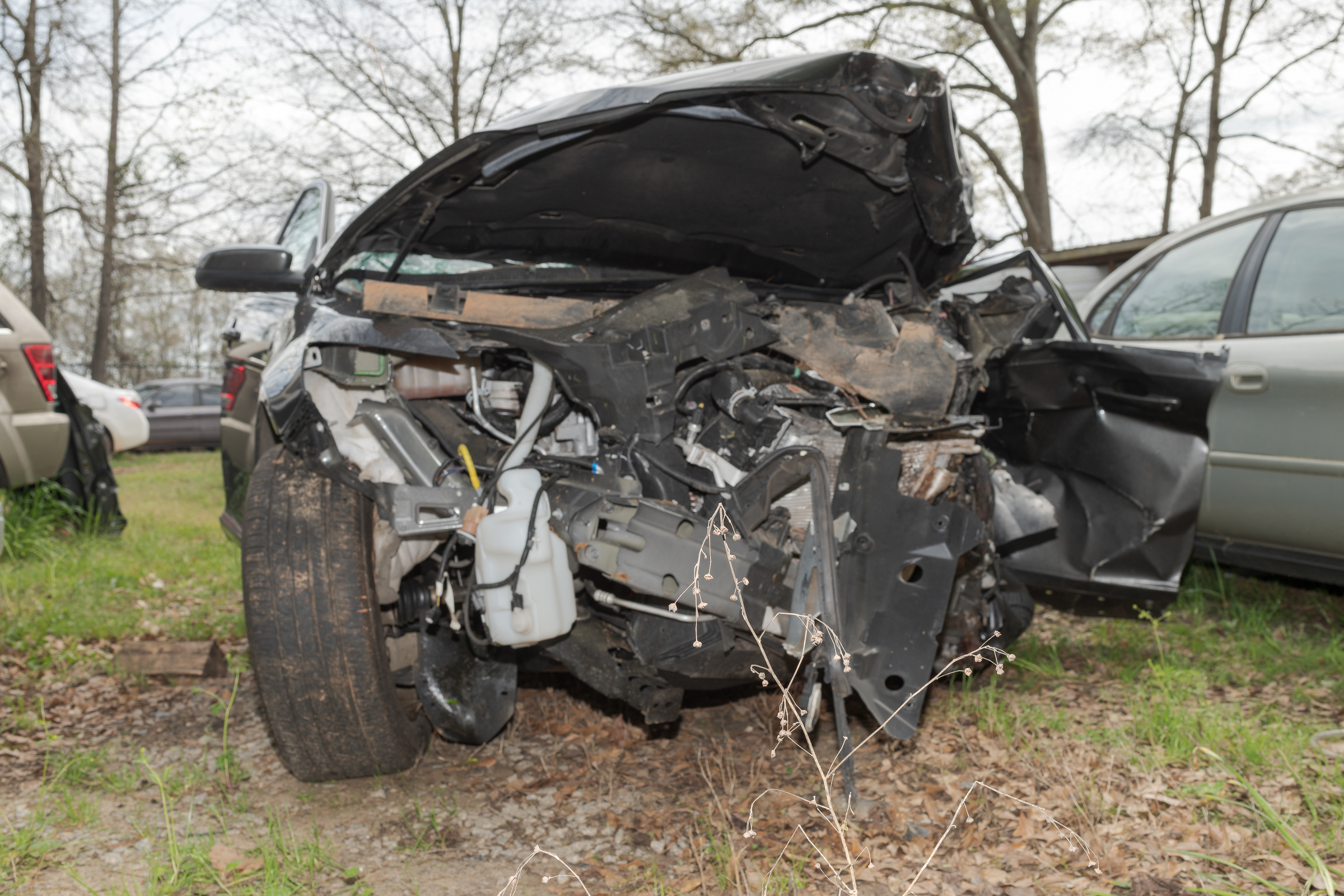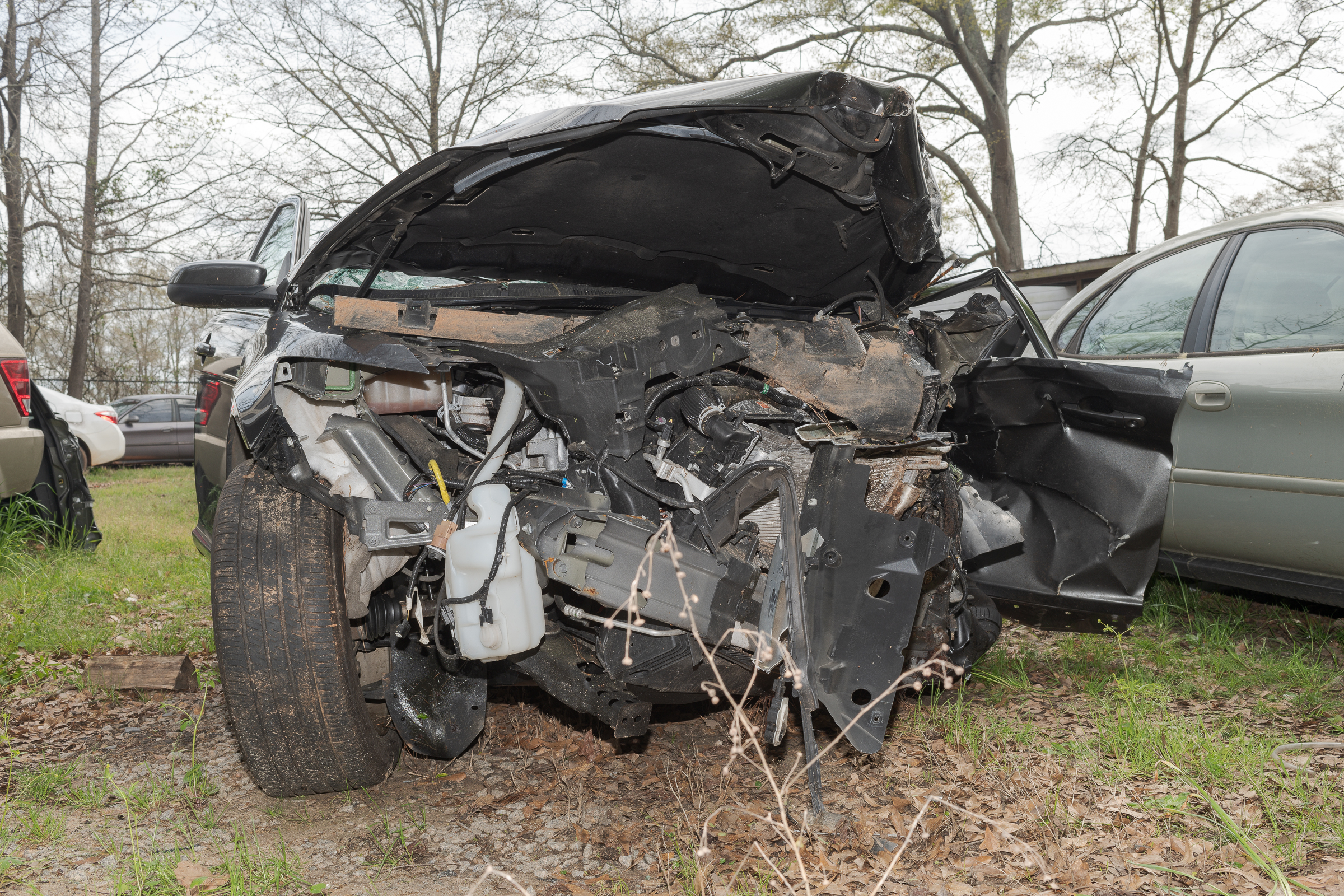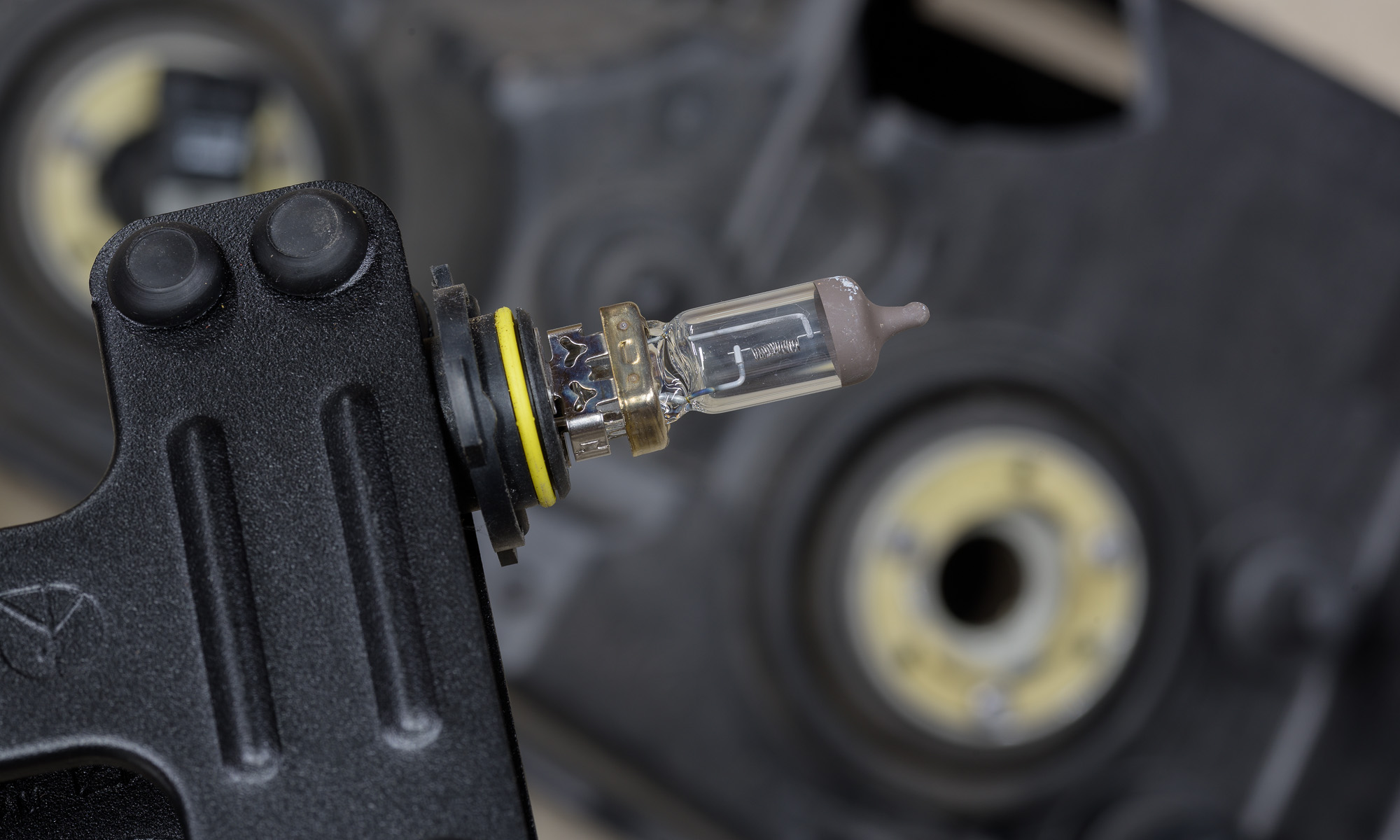If you use autofocus lenses, make sure the focus point is where you want it. I almost exclusively use ZEISS manual focus prime lenses, so I always have full control over where and what I focus on. (The only exception is when I use the Nikon 18-35 mm FX lens for pole photography. It’s a nice, small, light wide zoom lens with autofocus, which I can control using my CamRanger. This will be the subject of a future post.)
While I used my ZEISS 35 mm f/2 manual focus lens to purposely create these two photos, they illustrate an issue I’ve seen when I get photographs from either police or other experts. This car was inspected in a small, crowded area of a tow yard. To photograph the entire front end, I had to use a wide angle lens, and crouch down in bushes and weeds. In this first photo, the weeds are in sharp focus, but the car is blurry. (Click on the image to see a larger version, then click on back arrow to return to the post.)
This second photo has the car in proper focus, with the weeds out of focus in between the lens and car.
